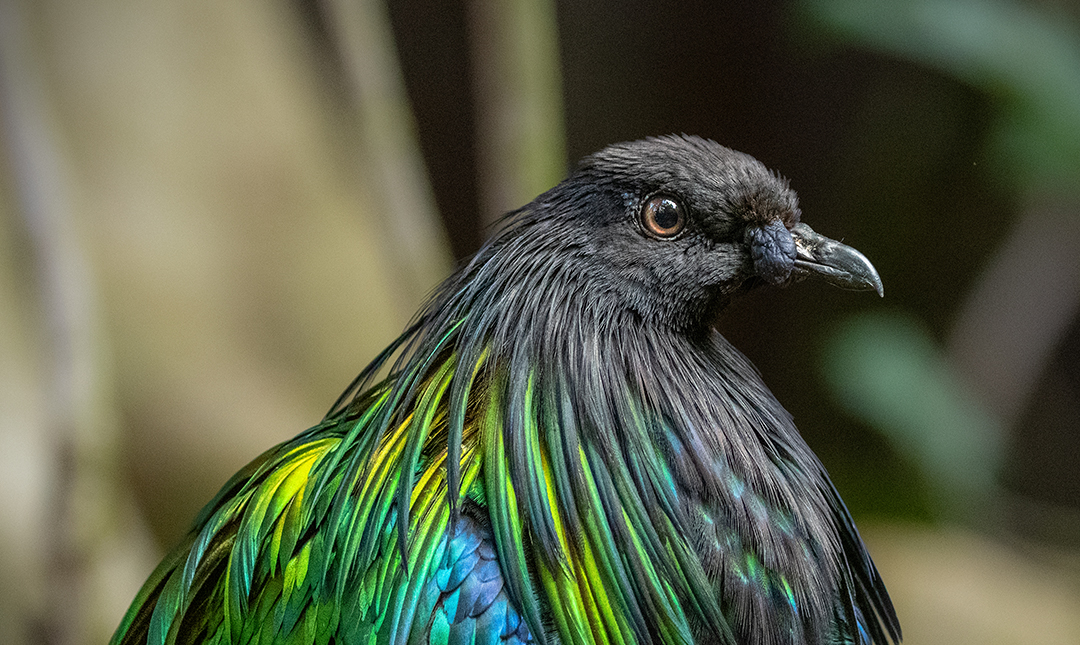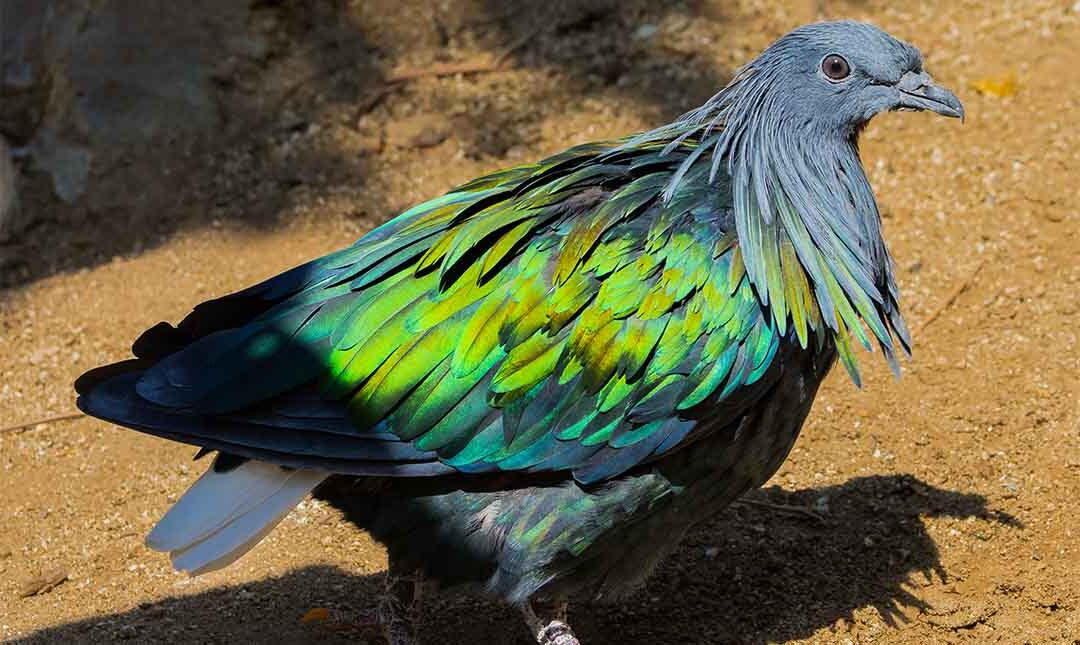About
There are more than 300 species of pigeons and doves (smaller pigeons). Pigeons may have been the first birds domesticated, perhaps as long ago as 5,000 years or more. DNA testing has confirmed that pigeons are closely related to the extinct flightless three-foot-tall dodo bird, and the Nicobar pigeon is its nearest genetic relative.
Native to Indonesia, Nicobar pigeons are among the most beautiful pigeons in the world, with iridescent feathers in a rainbow of shades of green, yellow, copper, and blue. While they may seem drab in the shade, the colors explode in sunlight. Their long neck feathers, called hackles, give these birds a very ornate look.
Nicobar pigeons roost and nest on smaller islands to keep safe from predators. They fly in big flocks to larger islands and the mainland to find food.
At the beginning of the breeding season, the males follow a typical pigeon courtship pattern, cooing loudly and displaying for the females, eventually appearing to bow to her. Pairs mate for life. The male selects a nest site in a tree and begins to gather sticks and other nesting material, which the female arranges into a nest. Usually there is a single bluish-white egg that hatches after about two weeks. Both parents share incubation duties. Chicks are ready to fledge four weeks after hatching, but usually remain in the nest for a while before leaving. Both parents feed the chick “crop milk,” which is secreted by the lining of the parent’s crop, or neck pouch. The Nicobar pigeon is threatened by habitat loss, hunting, the pet trade, and the introduction of non-native species, including cats and rats to their breeding islands.

Status
The Nicobar pigeon is listed as Near Threatened by the International Union for Conservation of Nature (IUCN) due to habitat loss, hunting, the pet trade, and the introduction of non-native species like cats and rats to their breeding islands.
Habitat
This species is found on many islands in the Indian and Western Pacific Oceans from the Philippines to New Guinea.
Diet
These birds feed on seeds, grain, berries, and insects. Nicobar pigeons usually feed on the ground in flocks.
Physical Characteristics
Body length is about 16 inches, and weight is between one and two pounds. Lifespan is eight to 12 years.
LOCATION WITHIN THE ZOO
You’ll find this bird in the Aviary. See Zoo Map.


